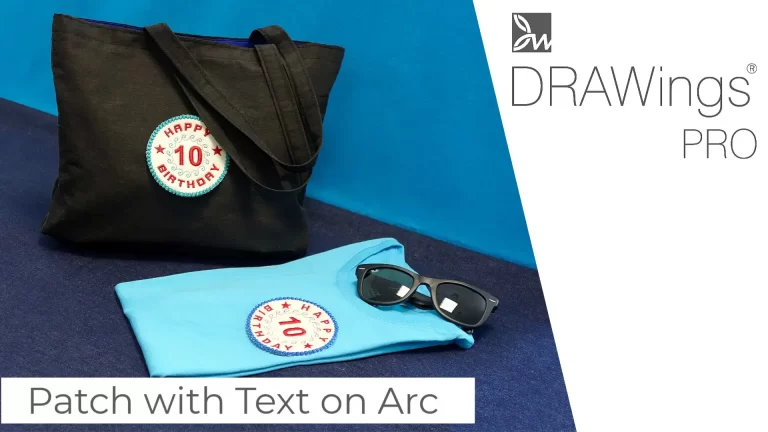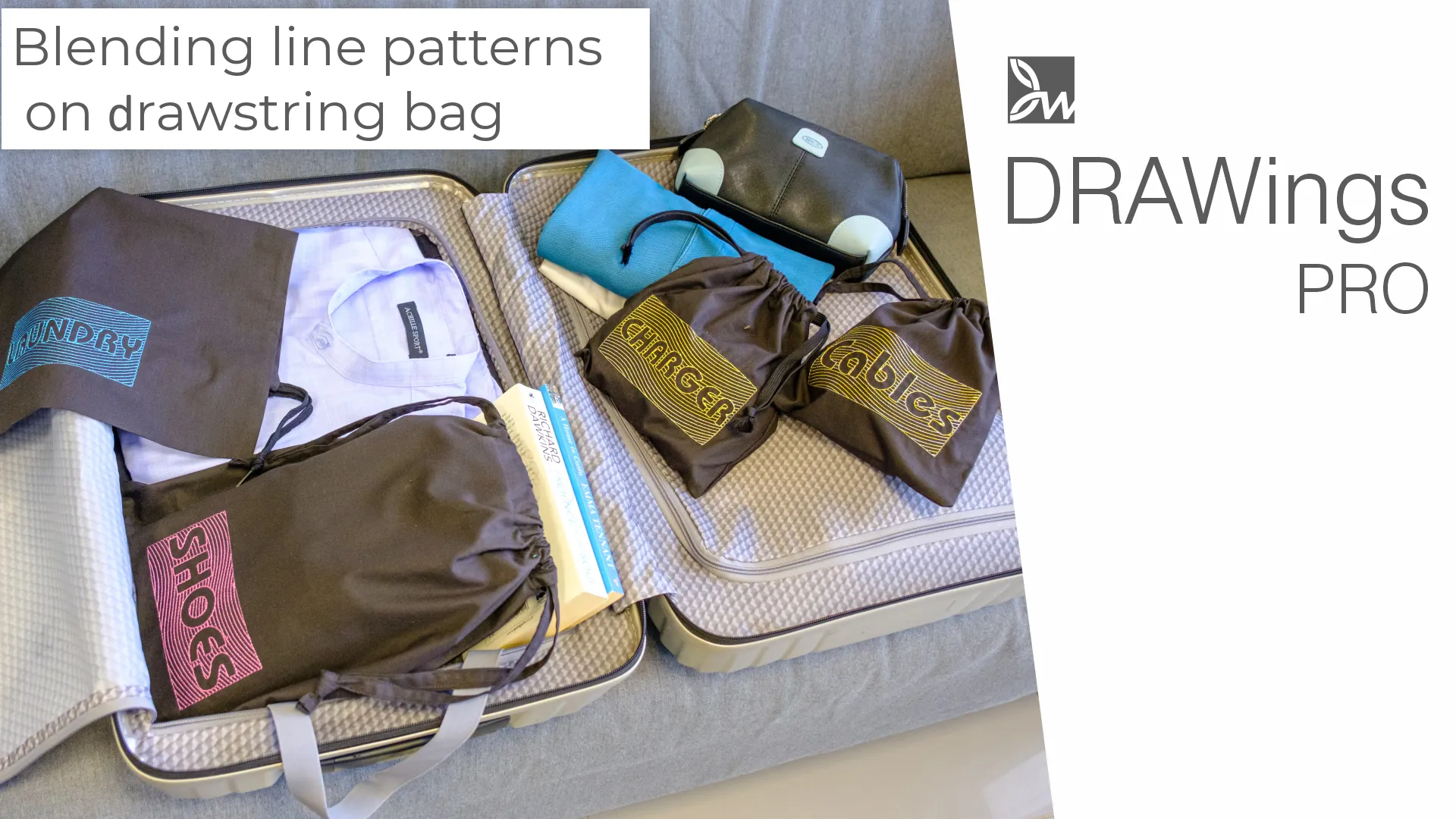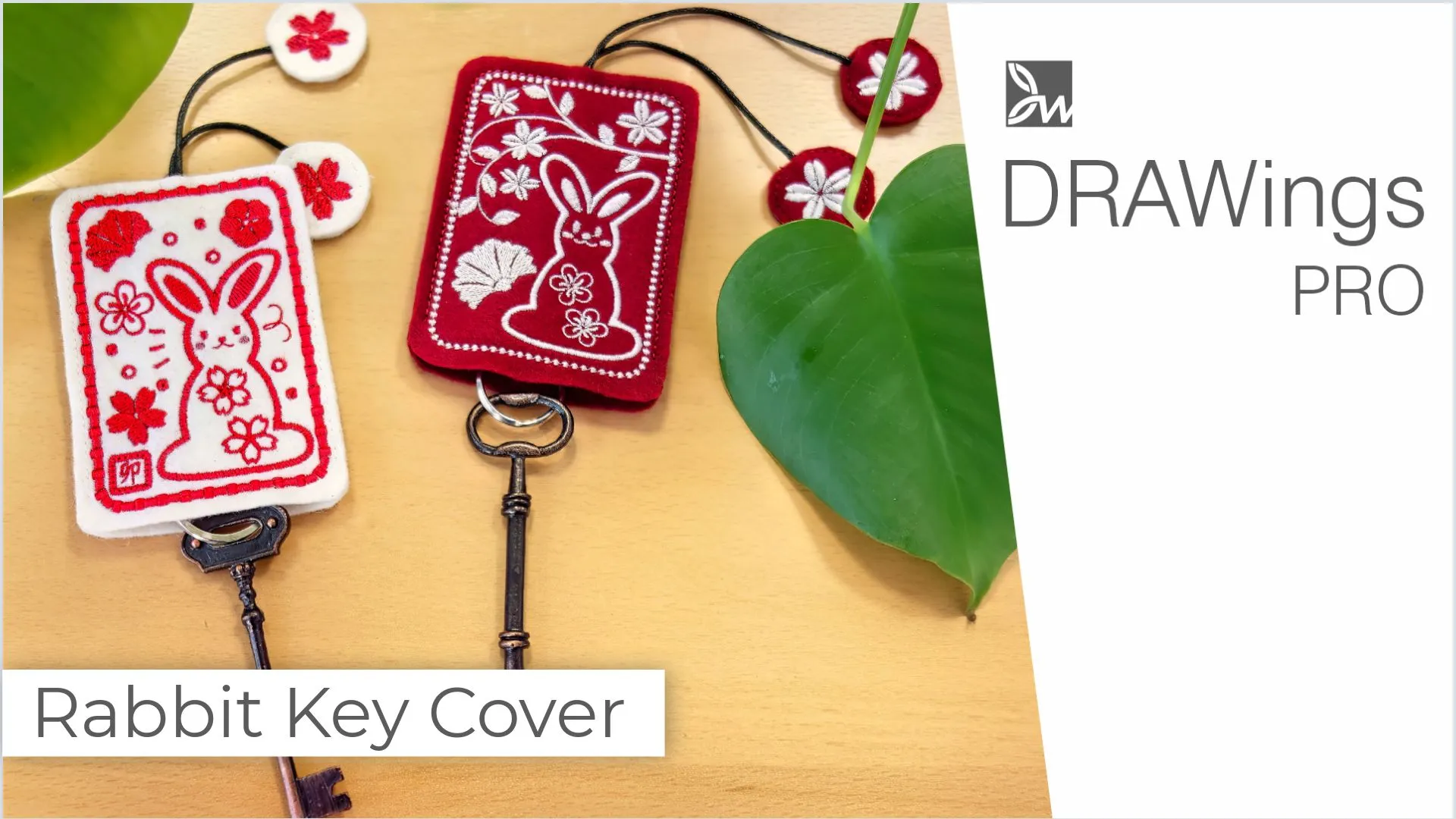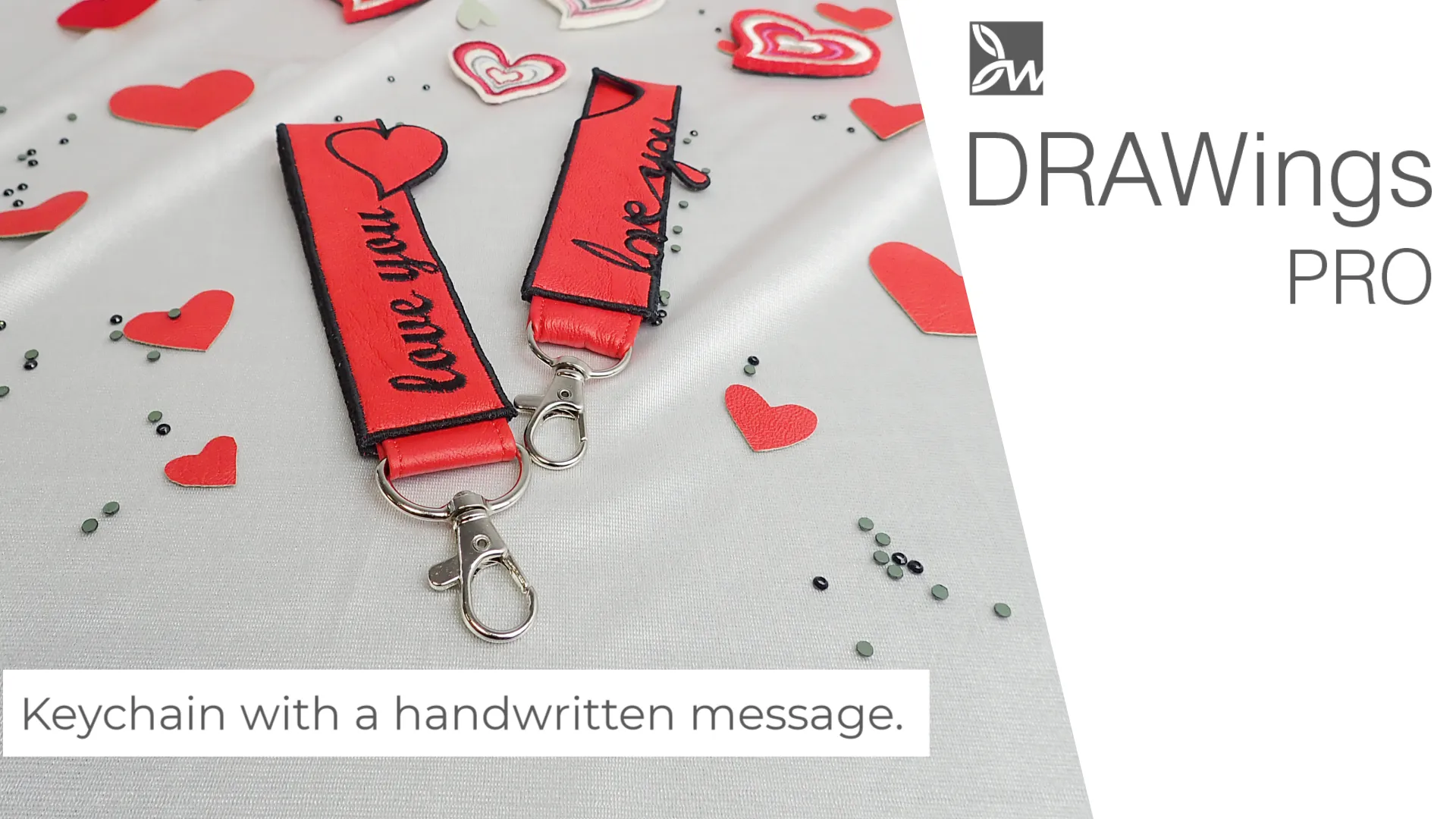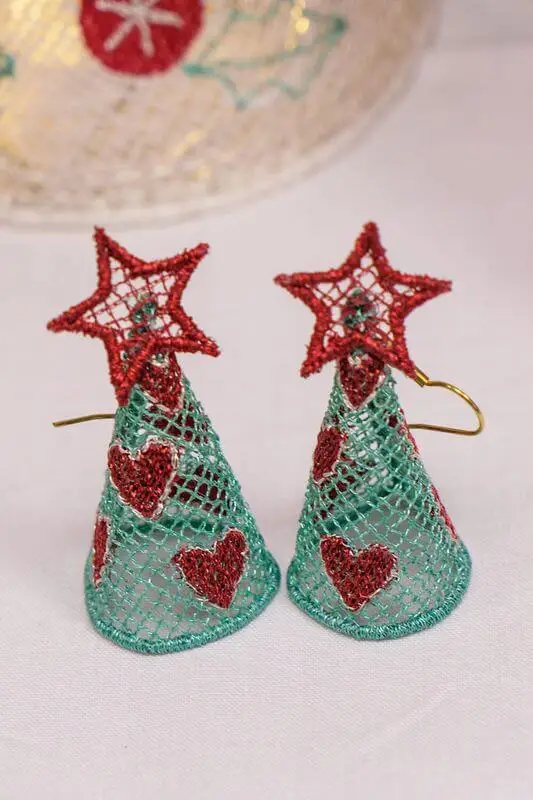Create a Layered Hibiscus Flower Embroidery Patch with Random Stitches
Learn how to create a stunning layered hibiscus flower embroidery patch using the knife tool and random stitches. This tutorial guides you through the process of designing and stitching a beautiful hibiscus flower with an ombré effect.
We’ll cover everything from selecting and modifying the clipart to setting up the embroidery sequence and enhancing the design with blending techniques. You’ll learn how to use the auto-border feature to create a design, and we’ll show you how to embroider it using stabilizer, felt fabric, and cutwork needles or scissors.
The video includes tips on color selection, stitch flow adjustment, and ideas for using your finished patch. Whether you’re new to embroidery or an experienced crafter, this tutorial offers valuable techniques to elevate your projects.
Setting Up the Design: Importing and Initial Adjustments
The journey begins by accessing the Clipart Library within the DRAWings PRO Embroidery software. Locate the hibiscus flower design labeled “Floral40” and click “Insert” to add it to your workspace. The software makes it easy to bring in clipart and other design elements, allowing for a smooth start to your project.
Upon inserting, a single left click will place the flower at its original size and orientation. Ensuring proportional scaling, adjust the width to 70mm. This specific measurement provides a balanced and versatile size for the patch, suitable for various applications.
Position the design precisely by setting the X and Y coordinates to 0, placing the flower at the center of the axis. This central alignment is crucial for maintaining symmetry, especially when layering elements or adding additional components later.
Right-clicking and selecting “Ungroup” enables you to separate the flower into individual components, essential for detailed editing and customization. Initially, all petals are combined, which is typical for imported designs. However, ungrouping them allows for independent manipulation, crucial for the following steps.
Creating the Outline: Auto-Border and Cutting Line Preparation
With the petals selected, the next step is to create an outline that will serve as a cutting line. Right-clicking and selecting the “Auto-border” option opens a dialog where you can set the parameters for the border. For this project, one repeat to the outside at a distance of 1mm is specified.
This slight offset ensures a clean cut around the petals without interfering with the design’s visual appeal. Additionally, checking the “Remove holes” option and setting the “Type” to “Running” creates a simple, clean outline suitable for cutting purposes.

The auto-border serves as the foundation for splitting the petals into sections, a technique that adds depth and complexity to the final design. However, for the cutting line to be effective, only the parts on top of the petals are necessary. To achieve this, use the Node Editor to split the outline at two points along each section.
Breaking apart these sections and deleting the unneeded parts refines the cutting line, ensuring precision. This meticulous process is vital for creating a layered effect, where each section of the petal can be individually styled and colored.
Dividing the Petals: Splitting and Resizing
To achieve the layered look, each petal must be divided into five sections. This segmentation allows for varied color application, creating a gradient effect that mimics the natural shading of a real hibiscus flower. Before proceeding, ensure that “Add New Objects as Clones” is disabled, allowing for independent control over each new section.
Select the running line and, while holding the “Shift” key, resize it to mark the first section. This step is repeated three more times, each time resizing inward to create progressively smaller sections.
Duplicating the outline and resizing each duplicate creates a layered effect, where each layer can be filled with different colors or stitch types. This method is particularly effective in embroidery, as it allows for the gradual transition of colors, enhancing the three-dimensional appearance of the design.
Fine-tuning these cutting lines using the Node Editor ensures clean, precise divisions, essential for achieving a professional finish. Once satisfied with the outlines, right-clicking and using the “Combine” option merges them into a single object. This step simplifies subsequent editing and ensures consistency across the design.
Knife Tool Application: Cutting the Petals into Sections
With the outlines prepared, the Knife tool is used to cut each petal into five distinct sections. This tool is indispensable in DRAWings PRO, enabling precise cuts along predefined lines. Select both the petals and the lines, then right-click and choose the “Knife” option. The software will cut along the outlines, dividing each petal into separate sections. This segmentation is key to applying different colors and stitch types, enhancing the design’s depth and texture.

Following the cuts, keep the sections selected and change the Fill Properties to Satin. Satin stitches are commonly used in embroidery for their smooth, lustrous finish, ideal for the flower’s petals. The ability to vary stitch types within the software allows for creative freedom, enabling users to achieve various textures and effects.
At this point, setting a different color for each section is crucial for the ombré effect. An ombré palette, transitioning from dark to light pink, is selected, starting with the outermost section.
Color and Stitch Density Customization
Color selection plays a pivotal role in the final appearance of the patch. For this design, a gradient of pink shades is chosen, starting with a dark pink for the outer section and gradually transitioning to lighter shades towards the center. This progression mimics the natural color variations found in hibiscus flowers, adding realism and visual interest. To further enhance the effect, the stitch density is adjusted. For the lighter inner sections, the density is increased to 0.70mm, ensuring a delicate, airy appearance.
To prevent the underlay from showing through the lighter stitches, the underlay type is set to “Tacking”. This setting secures the fabric without adding bulk, maintaining the lightness of the stitches. This meticulous approach to stitch density and underlay ensures that each section of the petal retains its intended visual effect. The careful management of these properties within the software allows for precise control over the final outcome, a hallmark of professional embroidery work.
Inner Section Finalization and Stigma Detailing
As the design progresses towards the center, the inner sections require special attention. To close the gap between these sections and unify them, a circle is drawn in the middle of the flower. This circle serves as a base for merging the inner sections, creating a cohesive central area. By selecting the circle and the inner sections, then using the “Weld” option, the software combines these elements into a single part. This step ensures a seamless transition from the outer petals to the center.
To simulate depth and create a shadow effect, a duplicate of the inner shape is made. Holding the “Shift” key while scaling down the duplicate ensures that it maintains the same center point, preserving alignment. Applying a darker color to this duplicate creates a subtle shadow, enhancing the design’s three-dimensional appearance. Setting the “Remove overlaps” option to “Never” ensures that this shadow remains on top of the underlying parts, adding to the layered effect.
Embellishing with Leaves and Additional Details
To complement the flower, a few leaves are added to the design using the Clipart Library. The “Floral Leaf01” design is inserted, ungrouped, and the stem is deleted, focusing solely on the leaf. Slightly stretching the leaf elongates it, fitting the overall design aesthetic. Setting the type to “Satin” and adjusting the density to 0.5mm ensures that the leaf’s texture is consistent with the petals. The software’s flexibility in editing imported clipart makes it easy to adapt elements to fit the desired design.

For added realism, shades of color are introduced to the leaves. A duplicate of the leaf is created, scaled down while holding the Shift key, and slightly moved to simulate a shadow. This duplicate is placed on top of the original, with a lighter density of 1mm, creating a subtle, shadowed effect. Choosing a different shade of green for this layer enhances the contrast and depth. Setting the underlay to “Tacking” prevents it from being visible through the lighter stitches, maintaining the delicate appearance.
Embroidery Sequence and Color Management
To ensure a smooth embroidery process, the sequence of stitching is carefully planned. The goal is to start from the outer sections and move inward. Switching to manual mode allows for precise control over this sequence. Selecting an outer section part, right-clicking on its fill color, and choosing “Select by Fill Color” highlights all similar colored sections. In the Sequence Manager, right-clicking on one of the selected icons and using the “Join Together” option groups these items, ensuring they are stitched in the correct order.
Grouping by color in the Sequence Manager allows for easy identification and reordering of elements. This organization is crucial for maintaining consistency and avoiding color overlaps. The darker colors are embroidered first, followed by lighter shades, creating a natural gradient effect. Using the “Slow Redraw” feature, the sequence can be reviewed, ensuring that all elements are correctly ordered and the design flows smoothly.
Enhancing Blending with Random Stitches
To achieve a more natural transition between sections, random stitches are applied. This technique involves setting a “Random” value and choosing a “Random Side,” varying the direction and length of stitches. For the outer sections, a 25% random value with “Random Side B” creates a subtle variation. As the design moves inward, the random value increases to 70% with “Random Side Both,” adding more pronounced randomness and blending.

For the final inner shapes, the random value is set back to 25% with “Random Side A.” This careful adjustment of stitch randomness enhances the blending between sections, giving the design a more organic look. Additionally, using the Node Editor, the upper outline of each inner part can be moved on top of the outer
one, further blending the stitches. This fine-tuning step is essential for achieving a seamless transition between colors and textures.
Final Touches and Border Creation
With the main elements of the design completed, attention turns to the finishing touches. The stigma and pollen grains are detailed, with colors and stitch types adjusted to complement the petals. At this stage, you can experiment with different color palettes to match your project or personal preference.
Adding a couple of leaves to the design using the Clipart Library further enhances the composition. After ungrouping and deleting unnecessary elements, the leaves can be stretched and adjusted as needed.
To complete the patch, a border is added around the entire design. Using the “Auto-border” option, a border is created to the outside at 3mm. This border serves as a guide for cutting the patch from the fabric, whether manually with scissors or using cutwork needles.
The border can be edited using the Node Editor, allowing for customization of the shape and ensuring it complements the design. Setting the outline to “Cutwork” and adjusting the offset to 1mm prepares the design for final cutting.
Materials Required
Before we dive into the design and creation process, let’s gather all the materials you’ll need to complete this project:
- Embroidery Machine: Capable of handling in-the-hoop designs.
- DRAWings PRO embroidery software: To design and digitize the pattern.
- Stabilizer: Tear-away stabilizer, large enough to fit the hoop.
- Felt Fabric: For the base of the patch, large enough to fit the design.
- Assorted Threads: In various shades, particularly pink for the flower and green for the leaves.
- Cutwork Needles or Scissors: For cutting around the patch or creating precise cuts if using cutwork needles.
- Printout of the Design: For reference during assembly (if desired).
- Paper Tape: Optional, for holding fabric in place during stitching.
- Pins: For positioning elements, if necessary.
Additional Items for Specific Uses:
- Elastic Band: If the patch is used as a closure.
- Button: If securing the elastic band.
- Iron: For pressing the final product, especially if attaching as an embellishment.
- Other Accessories: For additional customization, such as pin backings for brooches or clips for hair accessories.
Having these materials ready will make the process smoother and ensure you achieve the best results.

Preparing for Embroidery and Application
To bring the design to life, the fabric and stabilizer are prepared. A piece of felt fabric, along with tear-away stabilizer, is hooped together, providing a stable base for the embroidery. Placing the hoop on the machine, the embroidery begins with the leaves and their shadows.
The embroidery software guides the machine through each step, ensuring precision and accuracy. The petals are then embroidered, starting with the darkest shade and progressing to the lightest, creating a beautiful gradient effect.
Once the embroidery is complete, a running stitch around the design is added. This stitch serves as a guide for cutting the patch if not using cutwork needles. For those using cutwork needles, follow the machine’s instructions to cut along the running stitch, resulting in clean, crisp edges.
After removing the hoop, the tear-away stabilizer is carefully removed from the back of the patch. The finished patch can be used as an embellishment for garments, accessories, or even as unique jewelry pieces like brooches or earrings.
Creative Applications
The versatility of the finished hibiscus flower patch offers endless possibilities for creative applications. Whether used to customize clothing, accessories, or home decor, the patch adds a personal touch to any project. The techniques and tools covered in this post demonstrate the capabilities of DRAWings PRO Embroidery software, showcasing its flexibility and power. From using the Knife tool to applying random stitches, each feature contributes to the final product’s professional quality.
By experimenting with different colors, stitches, and placements, you can create unique designs that reflect your style. The ability to manipulate each element within the software provides creative freedom, allowing for truly customized creations. As you explore the world of embroidery, don’t hesitate to share your designs and experiences with the community. Whether you’re a seasoned pro or a beginner, there’s always something new to discover and create.
Final Thoughts
The layered hibiscus flower embroidery patch project is a perfect example of the artistic potential within the world of machine embroidery. With the right tools and techniques, even complex designs can be brought to life with precision and beauty.
So, grab your fabric, threads, and embroidery machine, and let’s get stitching!
DRAWings PRO Help Group
Happy crafting and don’t forget to share your creations with us in the
DRAWings PRO Help Group!
You can download the .DRAW file of the project, for free, from the link below:
- Project’s .DRAW file: Create a Layered Hibiscus Flower Embroidery Patch with Random Stitches
It can open only with the XII and later versions of DRAWings embroidery software
Frequently Asked Questions
Check also, our related projects “Creating an In-the-Hoop Tablet Case with Quilted Design Using Array Fill“, “Puff Foam embroidery: Mastering 3D Embroidery on Hats“, “DIY Drawstring Backpack with Applique Decoration“, “How to Make a Detachable Collar with an Embroidered Monogram” & “Create Eye-Catching BBQ Apron Designs with Stunning PaintStitch Embroidery“
















